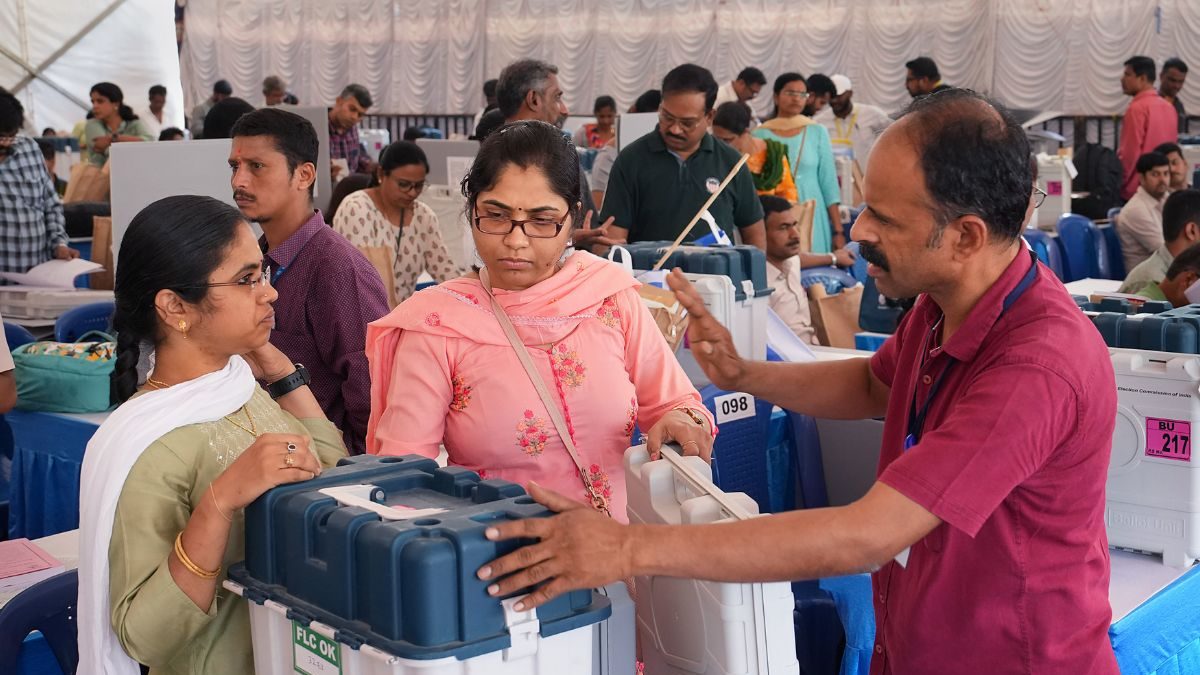Since 1985, the state has not seen any party retaining power in the subsequent election. The last time it was done was by the Janata Party and its then chief minister Ramakrishna Hegde. The outcome of the 2023 polls will decide if the BJP can rewrite history. Clearly, even if the party forms the next government and Basavaraj Bommai is retained as chief minister, the distinction will not go to him as the term of the current assembly began with the six-day tenure of BS Yediyurappa as the state’s CM.
Fragile tie-ups
The outcome of this election will also tell us if the state will have another round of coalition government or governments in the next five years as was the case between 2018 and 2023. Karnataka has mostly seen governments run by a single party with just four coalition governments so far. The state has 224 assembly seats and 113 are needed for a majority.
The state saw its first coalition government in 1983 under Janata Party’s Ramakrishna Hegde. Hegde was Karnataka’s first non-Congress chief minister. He headed a minority government where the Janata Party allied with Kranti Ranga and got outside support from the BJP, CPI(M), and CPI. The alliance government ran for 18 months. It faced a bitter humiliation in the 1984 polls after Indira Gandhi’s assassination and Hegde resigned to seek a fresh mandate.
The second coalition government in the state was formed after 21 years, in 2004. The Congress-JD(S) alliance government under Congress leader and chief minister Dharam Singh ran for 20 months. It collapsed with internal rifts in the alliance pushing the JD(S) to align with the BJP.
The Congress-JD(S) coalition government was followed by the JD(S)-BJP one. The alliance agreement was the chief ministerial term for the first 20 months for JD(S)’s HD Kumaraswamy followed by the next 20 months for BJP’s BS Yediyurappa. Kumaraswamy completed his term but gave Yediyurappa just seven days as the CM before withdrawing support.
The state saw the next coalition government in 2018. The BJP emerged as the largest party after the assembly elections, winning 104 seats. The Congress was the runner-up with 78 seats while the JD(S) came third with 37. The BJP, under BS Yediyurappa, formed the government but it ran only for six days as the party could not get the additional votes required to prove its majority in the house. It was replaced by the Congress-JD(S) coalition government with Kumaraswamy as chief minister. It ran for 14 months before seeing a wave of defections to the BJP. 15 Congress and JD(S) MLAs resigned and defected to the BJP, leading to the collapse of the coalition government. It was followed by the current BJP government ruling the state.
History tells us coalition governments in the state have failed to give it political stability.
Chief ministership and the caste calculus
Who will be Karnataka’s next chief minister, a post dominated so far by the Lingayat and Vokkaliga communities, with nine and seven CMs each? As per the current caste reservation system in the state, the Lingayat and Vokkaliga communities are placed under the OBC category but their sheer political dominance in terms of the number of chief ministerial terms has placed them in the driver’s seat.
Since 1947, the state has had 15 assembly polls and 32 chief ministerial terms with 23 CMs in office. Out of these, fourteen terms were held by chief ministers coming from the Lingayat community, eight by those from the Vokkaliga community, six by CMs from other OBC groups, and four by those from the Brahmin community.
If the BJP forms the next government, either on its own or in a coalition with the JD(S), and if it is headed by current chief minister Basavaraj Bommai, the state will continue to be under the leadership of a Lingayat community man. Bommai is the ninth Lingayat CM of the state and if he retains the office, Karnataka will see its 15th chief ministerial term being led by a person from that community.
If the BJP-led coalition decides on HD Kumaraswamy as the next chief minister, the state will be ruled by a Vokkaliga CM after almost four years of witnessing the 9th chief-ministerial term by a person hailing from the community.
On the other hand, if the Congress wins the elections or emerges as the largest party, as predicted by most exit polls, and if the future power-sharing arrangements have a Congress candidate as the next chief minister, it can throw up many possibilities.
If the Congress decides on Siddaramaiah, the state’s governance will come under the leadership of a non-Lingayat, non-Vokkaliga OBC chief minister. Siddaramaiah led the Congress government from 2013 to 2018. Coming from the Kuruba caste, he is the state’s 5th chief minister from other OBC communities, and if sworn in, he will be leading the 7th chief-ministerial term by someone hailing from the other OBC communities.
If DK Shivakumar, a Vokkaliga leader, wins the race, the state will get its eighth chief minister from the community.
Congress leader G Parameshwara, Karnataka’s deputy chief minister in the previous coalition government with the JD(S), is also in the race. If the Congress makes him CM, he will be the state’s first Dalit chief minister. Dalits are around 17% of Karnataka’s population and the Congress will try to send out a message before the next assembly and Lok Sabha elections with a Dalit, Mallikarjun Kharge, already being the party’s national president.


